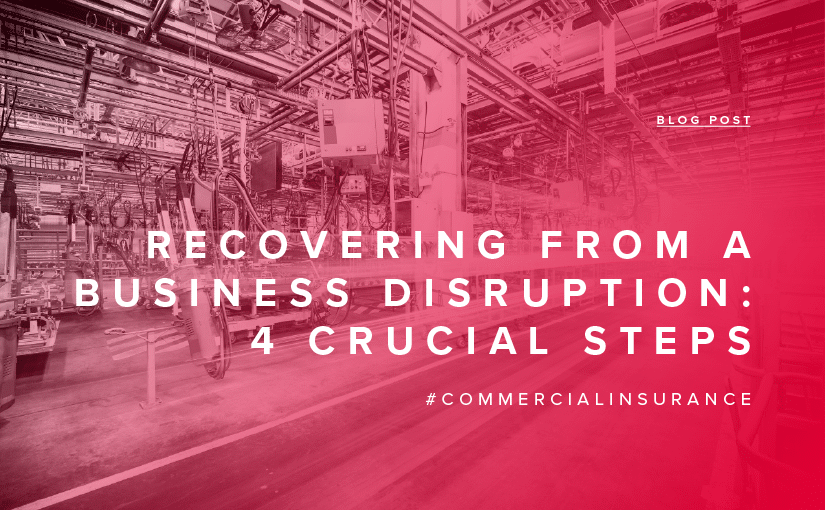Being prepared for a business disruption is not a nice-to-have, but a necessity for your operation. Whether it’s severe weather, wildfire, an illness outbreak or human failure, you need to be ready to handle all kinds of potential disasters.
A business continuity plan focuses on maintaining the functionality of your business both during (if possible) and following a crisis. The plan includes preventative controls and steps for protecting both staff and customers.
During the recovery process, it’s important to identify which business functions are critical and which can wait. In addition, you must consider:
- Are the functions mandated by law or regulations?
- Which functions are necessary to generate needed cash flow?
- Which functions affect your reputation with customers and the public?
- How much downtime can you afford in each critical area?
Recovering from a business disruption
Regardless of your business size or the type of disruption, the following four steps are crucial for your recovery:
1. Cleanup after a business disruption
Cleaning up your building or office is the first step in the recovery process. You may need to hire a contractor to remove debris and unusable items from the site. If you own the building, work with your engineers, contractors and local government to repair the facility so that it meets code. If you lease or rent space, your building management company should tell you when it’s safe to return to the building.
Keep track of all of the activities necessary to make the transition back to your offices a smooth one. Have a checklist for these items:
- Electricity and other utilities
- Plumbing (running water and working toilets)
- Computers, networks and internet service
- Files and electronic documents
- Telephones, copiers, printers and other office equipment
- Machinery and equipment needed on the job
- Mail and emails received during the disruption
If your location has been damaged, don’t enter until you’re sure it’s safe to do so. Your facilities maintenance team should ensure that occupancy is safe and should also handle any inspections.
Restoring computer systems and retrieving vital records and files are key to recovery. You may need to hire an information technology vendor to help you get all of your workstations up and running.
You may need to replace damaged computers. Talk to your information technology team about the possibility of recovering recover work in progress and unopened emails.
If returning to your building isn’t possible within a few days of a disaster, you should take steps to lease space or use an alternate location. If those efforts have already been mapped out in your business continuity plan, you’ll save a ton of time and personnel costs.
2. Reopening your business
Your continuity plan should outline the steps needed to reopen your business. Retail businesses may need to take inventory and restock shelves. They must also ensure their cash registers and point-of-sale (POS) networks are operational.
Keep all aspects of your business in mind when restarting, especially if you have manufacturing equipment or specialized machinery. Don’t forget to consider what your customers will need and expect when your doors reopen.
3. Restoring customer accounts
As part of your business continuity strategy, you’ll want to minimize customer account downtime during and after a disruption. Back up your accounts on a regular basis so you can retain valuable information, including orders and billing details.
Notify your customers when you’re back online. You may wish to reward them for their loyalty during the disruption by providing them with a discount or other consideration. This can be part of your post-incident marketing.
4. Customer service and marketing
No aspect of business disruption recovery is more important than making good on promises you have made to your customers. You may wish to combine your reopening with a marketing campaign or special sale to bring back your existing customers and attract new ones.
Sketch these plans out in advance, even broadly, so you don’t have to add brainstorming to your to-do list during recovery operations. You can tweak plans as needed if the time comes.
It’s crucial to be prepared
Following a business disruption, recovery strategies require all kinds of resources. This could include people, facilities, equipment, materials and information technology. Be sure you have properly analyzed the resources you need to execute your recovery strategies. Depending on the size of your company and the resources available, you may have multiple options.
Contact your insurance broker now to start getting your business disruption plan in place. They are a trusted adviser who can be a great asset to making your recovery process faster and smoother.

